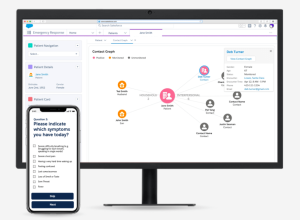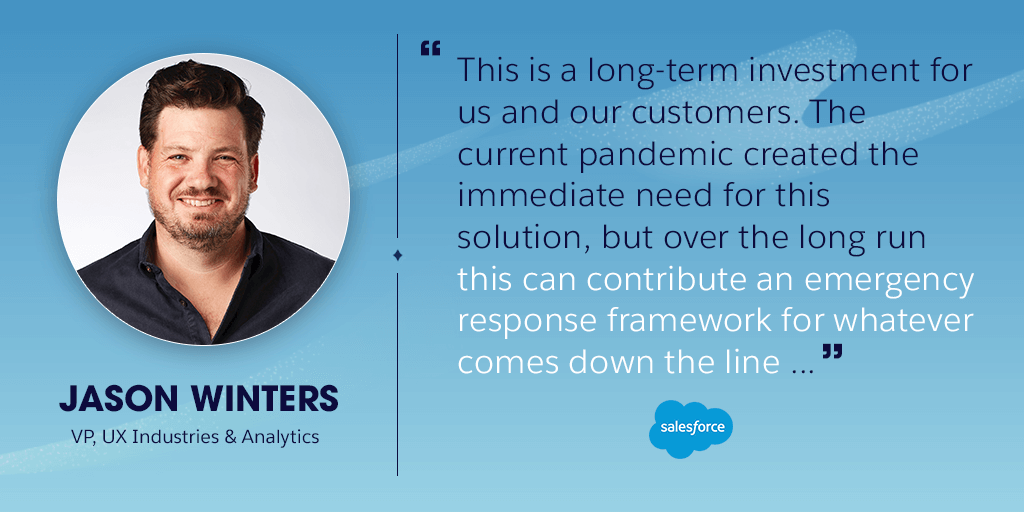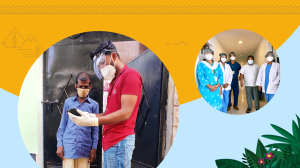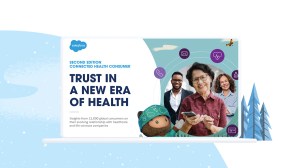At Salesforce we believe technology is a powerful tool to accelerate the private and public sector response to COVID-19. To that end, we recently released Work.com, a suite of new solutions and resources to help business and community leaders around the world reopen safely, re-skill employees and respond efficiently on the heels of the COVID-19 pandemic.
In this series, we’ll do a deeper dive into each of the Work.com capabilities: why we built them, how we built them, and how customers can leverage them in their response to COVID-19. This week, we’ll focus on Emergency Response Management for Public Health, which includes patient contact tracing.
What is Emergency Response Management for Public Health?
Emergency Response Management for Public Health enables public health institutions to quickly assess and triage patients with self-service, digital tools, and provide ongoing engagement and monitoring to enhance patient care. Contact Tracing allows public health organizations to manually trace health and relationship contacts in a safe and compliant manner, collecting data from individuals who are infected or potentially exposed to an infectious disease and creating visual maps of contacts and locations to monitor potential interactions and outbreak.
Why it matters
Around the world, public health organizations are under immense amounts of pressure — to flatten the curve, treat as many patients as possible, and save lives. Spike in cases has led to more than overloaded hospital beds and overworked physicians: organizations struggle to triage high-risk patients in-person, prevent the spread to those the patient has come in contact with, and simultaneously offer virtual care for others. Technology plays a huge role in augmenting and supporting healthcare organizations so that physicians can spend time where it matters most.
To learn more about the product, we talked with the team behind Emergency Response Management solutions: Amit Khanna, VP Product Management, Health Cloud; Ramesh Ragineni, SVP Software Engineering; and Jason Winters, VP UX for Industries & Analytics. Read on for the full interview.
Q. What are some of the challenges many public health institutions face in their response to COVID-19?
Amit: Public health systems have huge challenges in responding to COVID-19. For example, there is a great demand for physicians and hospital services but the number of infection cases is creating a serious mismatch between the supply and demand.
Some hospitals are overloaded and more and more patient services have to be offered remotely for safety. And, of course, institutions are also in need of equipment for staff and testing.
These kinds of issues are common to any kind of disaster, and are where technology can be applied to mitigate relief efforts for residents, communities, healthcare facilities and government agencies.
Q. Knowing those challenges, how did ERM (Emergency Response Management) come to be? What’s the story behind the solution?
Amit: The process started when we realized that our customers were going to need help dealing with the onslaught of COVID-19 which began with Salesforce Care, a group of free apps to help them get through the initial stage of the crisis. Then, we knew our Health Cloud product came fully configured so customers can quickly leverage it and start helping their communities in just days. This started with us working with customers, like Women’s College Hospital in Toronto, where we helped get fully configured products working in four days. They were up and running with contact tracing and helping the community, that fast. Customers are getting benefits from our HIPAA-compliant Health Cloud platform, and the whole industry team came together to deliver needed functionality. We’re continuing to work closely with customers to ensure they have the features needed to succeed in this new normal.
Q. Can you talk through how an institution could leverage ERM?
Amit: If you consider public health institutions, what we’ve built with ERM for Public Health directly addresses the challenges they are facing. For example, there are more things that these institutions need to be able to do on the phone now, as they determine whether an appointment needs to be scheduled or not. They can, for example, identify if someone has a normal viral infection as opposed to COVID-19, in which case they may not need to be seen. At that point, they might determine that COVID-19 testing is warranted, though, and they might steer a patient to a testing site.
So a primary set of challenges that our solution helps with has to do with making sure that at every level, we have parameters in place for making good decisions and evaluating levels of risk. We can help the institution determine if a self-assessment will suffice, or if a patient should talk with a nurse, and more.
Q. Where do you see the most potential for ERM to add value to organizations?
Jason: This is a long-term investment for us and our customers. The current pandemic created the immediate need for this solution, but over the long run this can contribute an emergency response framework right for whatever comes down the line, whether that’s an earthquake or hurricane or another pandemic. This is a product that’s going to be needed for years to come.
Amit: I think the biggest benefits will be for public health organizations and helping the economy because they can help organizations understand where the hotspots are, and how individuals are impacted and interacting with each other. They can help businesses open in stages, which I think is a big challenge.
If you’re in a public health organization or healthcare institution, how do you deliver the right services to individuals right now? How do you break through social barriers to provide the best possible healthcare, whether you are faced with lack of transportation or lack of food or other challenges raised by shelter in place? Our platform can help solve these problems.
Q. Public health officials say contact tracing is a key strategy for preventing the further spread of COVID-19. How does contact tracing work in Salesforce ERM?
Ramesh: We provide pre-configured tools that help customers in customized ways. One of the most powerful is the Contact Tracing Graph. With it, you can get a very comprehensive view of households, social relationships and the potential spread of COVID-19. Customers can trace potential infection by places, people who were at specific events, and in other ways. Contact tracing tasks can be chosen and assigned to people and there are also pre-configured emergency response community templates. These make it easy for citizens to request emergency assistance.
Members of the community can leverage ERM to search for health care providers by location specialist or many other factors. And they can also go to a pre-defined chatbot we are providing that provides dialogue-based solutions.
What’s also exciting is that we have integrated actionable Einstein Analytics for Emergency Response Management, where we provide a solution based on industry-standard KPIs and best practices for analytics. Customers can use analytics dashboards to respond faster in this crisis, and make decisions much faster.
Jason: Also, one of the challenges we took on was making sure that all of this is really built on trust between the people who are being asked questions, and who are answering the questions. People are having to find new ways of communicating with healthcare providers and others. We want to preserve accuracy in their responses and collected data, because the data is very valuable. And we absolutely want to respect their privacy.
Q. How did you build manual contact tracing on Salesforce? What innovations within Salesforce enabled you to build with speed and for scale?
Ramesh: We definitely leveraged our platform and products that we’ve developed around Industry Cloud for several years. But another key part of what came together is we were able to leverage senior talent from product, engineering, and many cross-functional teams. Our Ohana came together. The domain expertise they offered was so critical here. In a short time, they were hands-on writing code and dividing and conquering.
Let’s not forget that HIPAA-compliance is part of our Health Cloud, too, so we were able to quickly deliver compliant solutions. If you don’t have that compliance, you can’t work with customers in this space.
Q. Are there any interesting learnings you arrived at during the process?
Amit: You don’t always expect that people in the public health space will know how to leverage a new technology and just be up and running immediately. So the one of the biggest learnings we arrived at is that we needed to provide a solution that just works right away. That is what you see with our contract tracing. With it, customers can leverage a working implementation really quickly, working right out of the box.
Jason: I would just add that I’ve been at Salesforce for 15 years and I’ve seen the company respond quickly to things before, but never, never this quickly and with this unified an approach. We are using our entire platform to come up with a solution to a sudden challenge. And so that’s just been amazing to watch, from executive-level work down to the individuals working on the teams. And people are responding while working from home ourselves. We are co-designing solutions with our customers and learning from them.
Ramesh: “The commitment and the seriousness in which the team came together was astounding. I could see people working tirelessly across both time zones, so energized to make this happen. Leadership also played a significant role. In the end, it’s all about the people.”
To learn more about Salesforce Emergency Response Management solutions, check out this page.
















